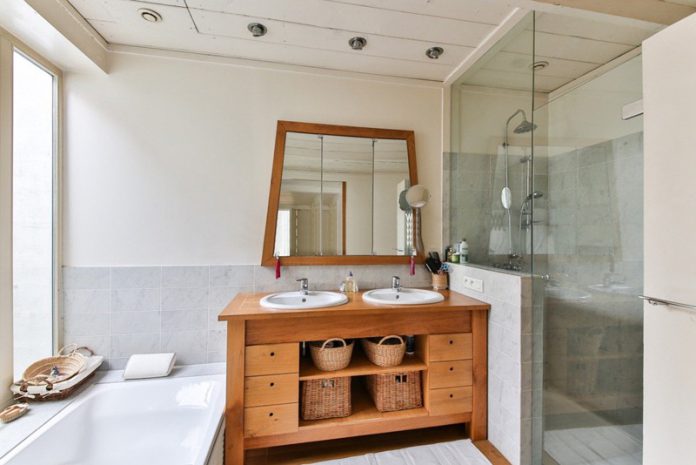A bathroom remodel can be a big project. If you have no experience with this sort of thing, it might seem scary. But what if the room in your home that could use a facelift is your bathroom?
Here’s how to start a bathroom remodeling project and get all the information you need for a complete renovation that gives you more space and function without making things worse than they were before.
1. One of the first steps for those who want to give their bathroom an overhaul is finding out which options are available for makeovers.
There are many different ways to accomplish this task—from hiring bathroom remodeling companies to do everything from scratch or doing as much as possible themselves with help from friends and family. Do some research online and at your local library and see what appeals most to you.
Some considerations to take into account when planning for a bathroom remodel include things like:
- The time it takes
- Budget concerns
- Cultural norms in your geographical location
Don’t forget that there are always compromises (like most projects of this nature), but it is up to you as the homeowner to decide how much work needs to be done and which options best suit your lifestyle and aesthetic tastes.
2. When drawing up plans or blueprints, try to leave room for spontaneity and think about things that might not have crossed your mind initially.
For example, consider installing a window so that natural light can come pouring in from outside. It’s helpful if you have an unlimited budget because it allows you to take a more holistic approach and allows you to experiment with different ideas.
However, before going ahead with a major remodel, do your research and read up about other people’s experiences so that you have a good idea of what problems might occur before they happen.
3. Sit down and determine exactly how much time it will take for your bathroom remodel from start to finish.
This is often called “downtime” because the space is completely inaccessible during this period—which means that everything else in your home could be affected as well, depending on how disruptive it’s going to be.
If your bathroom gets a lot of use by members of the family or guests who come over frequently, plan accordingly and give yourself enough time to get used to the new layout before people start coming over for social visits.
4. Sticking to a budget is very important when it comes to home renovations.
But staying within your financial limits shouldn’t be seen as an end-all solution—especially if you’re trying to make something better than it was before. Try not to get too swept up in this step, especially after everything else has been taken care of successfully.
All you need do is get the essentials done without worrying about whether or not there’s enough money left over for additional features like heated floors, televisions embedded into the mirror (or behind it), etc.
5. Always check with your local building codes and zoning laws before starting any sort of project that might alter the structure of your home, even if it’s only a small bathroom makeover.
In most places of the world, anything that constitutes a major renovation is going to need various types of permits and inspections before it can be completed. You might also need to hire an architect or draftsman to get everything drawn up for media and construction purposes.
6. According to professional bathroom remodelers, bathrooms should be no larger than 200 square feet
They should contain enough storage space in the walls and under sinks so that they don’t become cluttered with things like bottles of shampoo and bar soap. Although this might seem obvious when you’re designing your new space from scratch, it can be easy to forget when there’s already clutter everywhere you look—especially if someone else is doing the work for you.
How to Apply a Bathroom Makeover
The first step is always to take everything out of the bathroom and dispose of it in a landfill or recycling center. If you’re planning on throwing anything away, think carefully about whether or not it can be salvaged for parts because they might come in handy later on during construction.
Once that’s done, you need to bring all new things into the room and begin assembling them one by one until your layout is just right. Don’t forget to include entrances and exits so that people don’t have trouble getting around while construction is going on.
No matter how much time, effort, and money goes into a bathroom remodel project, there’s no guarantee everyone will love it. That’s why it’s a good idea to test the waters by bringing in a few guests and asking for their opinions about what you’ve done so far.
This is also the point at which you should ask any bathroom renovation contractor working on your project if there are additional things they want to do before everything is finished—and mention again that you don’t have much money to spend, just so they aren’t surprised later on.
After everything has been put together, strike up some conversations with friends and family members who come over frequently. This will allow them to say something (or not) about how pleasant or unpleasant the remodeled bathroom is compared to the old one you used to have.
This step can be difficult because you might not want to offend anyone or seem ungrateful, but it’s important to be honest about how the bathroom looks and functions.
How Long Does it Take?
The length of time a bathroom renovation project takes varies dramatically depending on what is being done. It might not require any more than 10-20 days if you were only planning on installing new fixtures or painted walls—at least when there aren’t any complications involved like faulty wiring or severely damaged subfloors that need to be torn out and replaced with something else entirely.
If your bathroom doesn’t fit these criteria, you can expect everything to take anywhere from 1 month (30 days) up to 2 months (60 days). Certain things could take much longer like retiling an entire room or installing a new shower.
What Should I Expect to Pay?
While there are no fixed prices for bathroom remodeling projects, you can get an idea of what everything costs by looking up different fixtures and materials online or visiting your local home improvement store.
Typically speaking, though, any project that takes longer than 2 weeks is going to cost at least $1,000-$5,000 because the bathroom remodeling contractors have to cover their lost time while you wait for things to finish.
When someone comes over for the first time after a bathroom has been remodeled, they might offer you comments like “nice job!” or “wow! it’s so awesome.” You should try to act humble in these cases because not everyone will be able to tell how much work you put into it or that you did most of the work yourself.
What If I Don’t Like It?
It’s normal to feel nervous about spending all this time and money on a remodeled bathroom because what if you don’t end up liking how it looks in the end?
There are countless reasons why you might not enjoy your new bathroom after doing something so dramatic to change its layout compared to before, but more often than not it comes down to certain things being placed somewhere inconvenient.
For example, sometimes people place their towels too far away from where they take showers, or their toilets are tucked off in some dark corner where they’re difficult to find at night. If there is anything of that nature, try disassembling everything and moving it where it should be to see if that helps.
What Can Go Wrong?
Sometimes, despite how much time someone spends planning out their bathroom’s new layout, they neglect one detail that causes complications for everyone who has to use the bathroom after them.
For example, let’s say you decide to tear down the old wall between your shower and toilet so that they’re in the same room instead of two different ones—but you forget to change all of your light fixtures so there are fewer outlets available.
This could mean people have trouble turning on or off any of their appliances because there aren’t enough nearby outlets anymore. Another common problem is when people install a new sink where it doesn’t fit next to an existing mirror—and end up having some type of damage because of this.
What’s Left to Be Done?
Once you’ve finished remodeling your bathroom, all that remains is simple maintenance like cleaning and replacing things like light bulbs when they burn out. If there are any drafty spots where air or water can slip through the cracks or any loose tiles on the wall, consider patching them up with some sealant or grout until you have time and money to get them fixed properly.
How Do I Prevent it from Happening Again?
To avoid having problems like these in the future, make sure everything has been tightened down securely before trying to move it around. Even if the item seems stable where it is at first glance, dangling it by its handle a few inches could cause something like a handle to break off.
It might be helpful to hire a plumber or electrician for this part (if they’re not already involved in your project) and let them handle all the little details that most people overlook.















